To install an electric tankless hot water heater, ensure you follow the manufacturer’s instructions for mounting and electrical connections. Then, properly attach the water supply and outlet pipes to the unit.
Additionally, set the desired temperature and test the system to ensure it’s functioning correctly.
What Is An Electric Tankless Hot Water Heater?
Definition and Basic Functioning
An electric tankless hot water heater is an innovative device that provides on-demand hot water without the need for a storage tank. Unlike traditional water heaters that store and heat water continuously, electric tankless hot water heaters heat water quickly and deliver it instantly when needed.
So how does it work? Well, when you turn on a hot water faucet or appliance, cold water enters the tankless heater through an inlet pipe. Inside the heater, powerful electric coils or elements heat the water to the desired temperature. The hot water is then delivered to your faucet or appliance through an outlet pipe. This continuous flow of heated water ensures that you have hot water whenever you need it.
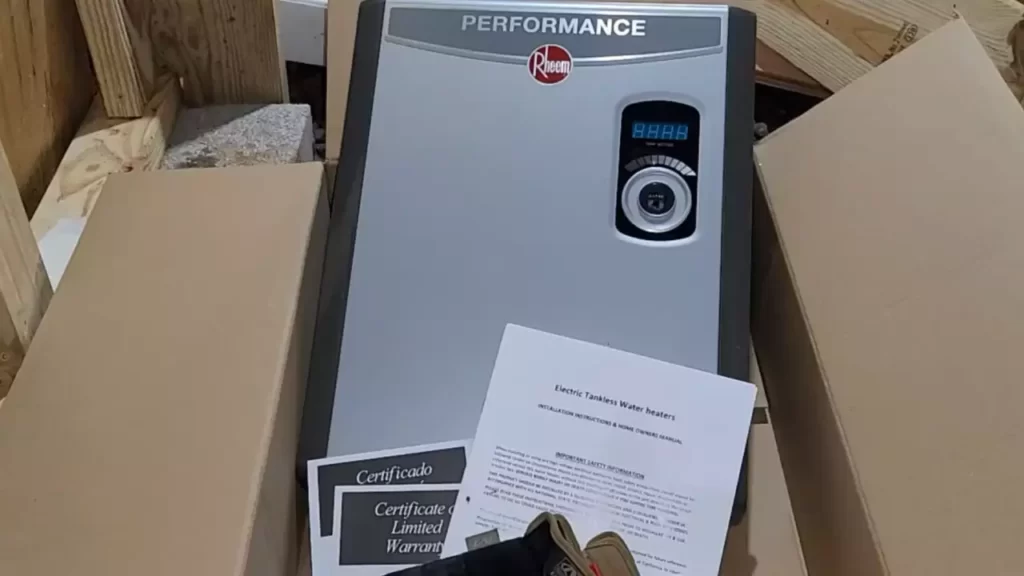
Benefits of an Electric Tankless Hot Water Heater
There are several benefits of installing an electric tankless hot water heater in your home. Let’s take a look at some of them:
- Energy Efficiency: Tankless heaters only heat water when it is needed, unlike storage tank heaters that constantly heat water, even when you’re not using it. This results in significant energy savings and lower utility bills.
- Space Savings: Electric tankless hot water heaters are compact and wall-mounted, freeing up valuable floor space in your home.
- Endless Hot Water: With a tankless heater, you never have to worry about running out of hot water during a shower or while doing laundry. The heater provides a continuous supply of hot water as long as it’s needed.
- Longer Lifespan: Tankless heaters generally have a longer lifespan than traditional storage tank heaters. With proper maintenance, they can last up to 20 years or more.
- Reduced Risk of Water Damage: Since tankless heaters don’t have a storage tank that can leak or burst, the risk of water damage caused by tank failures is significantly reduced.
By harnessing the power of electricity and advanced heating technology, electric tankless hot water heaters provide an efficient, reliable, and convenient solution for your hot water needs. Whether you’re looking to replace your old water heater or upgrade to a more energy-efficient system, installing an electric tankless hot water heater is an excellent choice that can improve your daily life and save you money in the long run.
Determining The Right Size And Capacity
Factors to consider for proper sizing
Installing an electric tankless hot water heater can provide numerous benefits, such as energy efficiency and endless hot water supply. However, it is crucial to determine the right size and capacity before making a purchase. Proper sizing ensures that the unit can meet your household’s hot water demands effectively. To help you make an informed decision, consider the following factors:
Calculating the required flow rate
Calculating the required flow rate is the first step in determining the size and capacity of your electric tankless hot water heater. This measurement is crucial because it determines the amount of hot water the unit needs to deliver at any given time. To calculate the required flow rate, follow these steps:
- Identify the maximum number of hot water outlets that may be in simultaneous use. Consider fixtures such as showers, faucets, washing machines, and dishwashers.
- Determine the flow rate of each hot water outlet. This information is typically available from the manufacturer or can be measured using a flow meter.
- Add up the flow rates of all the outlets to get the total required flow rate.
For example, if you have a shower with a flow rate of 2 gallons per minute (gpm) and a faucet with a flow rate of 1.5 gpm, the total required flow rate would be 3.5 gpm.
Choosing the appropriate unit capacity
Once you have calculated the required flow rate, it is essential to choose an electric tankless hot water heater with the appropriate unit capacity. The unit capacity refers to the maximum flow rate the heater can handle while maintaining the desired temperature.
To determine the appropriate unit capacity:
- Consider the temperature rise needed. This is the difference between the desired hot water temperature and the temperature of the incoming cold water. For example, if you want your hot water to be at 120°F and the incoming water temperature is 60°F, the temperature rise would be 60°F.
- Consult the manufacturer’s specifications or consult a plumber to find a unit that can achieve the necessary temperature rise for your desired flow rate.
- Consider any additional features or factors that may affect the unit’s capacity, such as energy-saving modes or water-saving fixtures.
By considering factors such as the required flow rate and appropriate unit capacity, you can ensure that the electric tankless hot water heater you choose will meet your household’s hot water demands effectively. This will help you enjoy the benefits of energy efficiency and endless hot water supply for years to come.
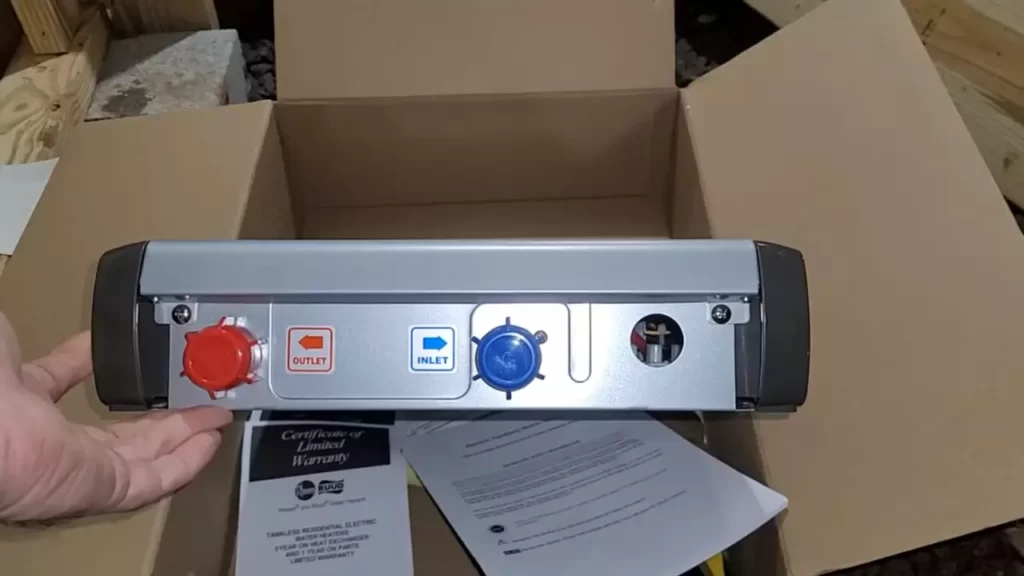
Necessary Tools And Materials
Before you begin installing an electric tankless hot water heater, it is essential to gather all the necessary tools and materials. Having everything ready beforehand will make the installation process smoother and more efficient. In this section, we will outline the list of tools needed for the installation as well as the types of materials required.
List of tools needed for installation
Installing an electric tankless hot water heater requires specific tools to ensure a successful and professional installation. Here is a comprehensive list of the tools you will need:
- Screwdriver set
- Adjustable wrench
- Channel locks
- Plumber’s tape
- Wire strippers
- Electrical tester
- Drill
- Hole saw
- Pipe cutter
- Pipe wrench
- Tubing bender
- Measuring tape
- Level
These tools will help you handle various tasks during the installation process, such as tightening connections, cutting pipes, and testing electrical connections. Ensure that you have all these tools on hand before you start the installation, as it can save you time and prevent any delays.
Types of materials required
In addition to the tools, you will also need specific materials for installing an electric tankless hot water heater. Here are the types of materials you should have:
- Electric tankless hot water heater unit
- Water supply lines
- Compression fittings
- Electrical wiring
- Mounting brackets
- Pipe insulation
- Pipe connectors
- Pressure relief valve
- Temperature and pressure relief valve
- Pipe sealant
- Insulating foam
- Strain relief connector
- Grounding wire
These materials are crucial for the proper functioning and safety of the electric tankless hot water heater. Make sure you have all the necessary materials readily available, as it will facilitate the installation process and prevent any last-minute runs to the store.
Safety Precautions
When it comes to installing an electric tankless hot water heater, safety should always be the top priority. Taking proper safety measures during the installation process not only ensures the smooth functioning of the heater but also prevents any potential hazards. In this section, we will highlight the importance of safety measures and provide you with valuable tips for handling electrical components.
Importance of safety measures during installation
It cannot be emphasized enough that safety measures are vital during the installation of an electric tankless hot water heater. These precautions not only protect you but also safeguard your property. Here are a few reasons why paying attention to safety is crucial:
- Prevention of electric shocks: Electric tankless hot water heaters operate on high voltage, making it necessary to exercise caution. Following safety measures can significantly reduce the risk of electric shocks and injuries.
- Avoiding property damage: An improper installation can potentially lead to water leakage or even fire hazards. By adhering to safety precautions, you ensure that the heater operates correctly and reduces the chances of water-related damages.
- Safeguarding longevity: A well-installed electric tankless hot water heater can provide long-lasting performance. Implementing safety measures guarantees the longevity of the unit and minimizes the chances of breakdowns or malfunctions.
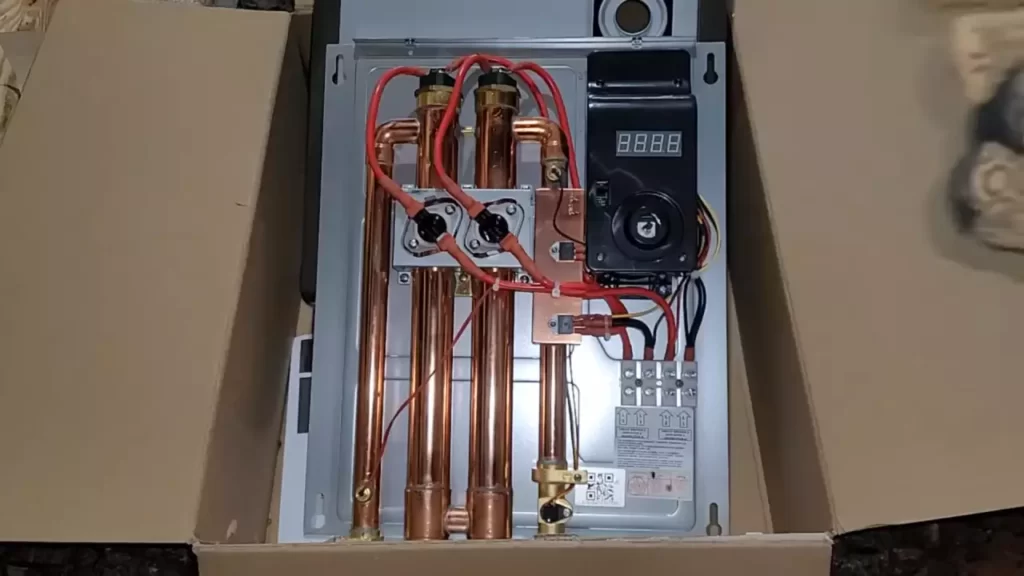
Tips for handling electrical components
Working with electrical components requires the utmost care and attention. By following these tips, you can handle electrical components safely during the installation of an electric tankless hot water heater:
- Switch off the power supply: Before starting any installation process, make sure to turn off the power at the circuit breaker. This step prevents any accidental electric shock during the handling of electrical components.
- Use insulated tools: When working with electrical fittings or wires, always use insulated tools. Insulated tools prevent electrical conductivity and reduce the risk of shocks.
- Proper grounding: Ensure the electric tankless hot water heater is properly grounded. This step provides protection against electrical faults and improves safety.
- Avoid damp environments: When handling electrical components, make sure your hands are dry, and the working environment is free from moisture. Water and moisture can conduct electricity and pose a significant risk.
- Continuous inspection: Regularly inspect the electrical components for any signs of wear and tear. Replace any damaged or frayed wires to maintain safety and prevent potential hazards.
By following these precautions and tips, you can ensure a safe and successful installation of your electric tankless hot water heater. Remember, prioritizing safety not only protects you and your property but also guarantees the longevity and optimal performance of the unit.
Choosing The Installation Location
Preparing The Installation Area
Assessing the Current Plumbing Setup
Before installing an electric tankless hot water heater, it is important to assess the current plumbing setup in your home. This will help you determine whether any modifications are required for the installation process. Assessing the plumbing setup involves examining the current water supply, electrical connections, and venting system in your home.
To begin, check the existing water supply lines to ensure they are compatible with the tankless hot water heater. Measure the pipe diameter, and if necessary, consult the manufacturer’s specifications to determine the appropriate sizing requirements for the unit. Additionally, check for any signs of corrosion or leaks in the existing pipes, as this may indicate a need for replacement or repair.
Next, evaluate the electrical connections in the designated installation area. Determine whether you have the necessary voltage and amperage capacity to support the tankless hot water heater. If not, consult a licensed electrician to make any required upgrades to the electrical system.
Finally, inspect the venting system in your home. Tankless hot water heaters require proper ventilation to safely expel combustion gases. Ensure the existing venting system meets the manufacturer’s requirements for the unit you are installing. If modifications are needed, consult a professional to ensure proper installation and adherence to local building codes.
Modifications Required for Installation
After assessing the current plumbing setup, you may find that modifications are necessary to accommodate the installation of an electric tankless hot water heater. These modifications can include adjusting or rerouting the existing water lines, upgrading the electrical system, and installing or modifying the venting system.
In some cases, you may need to reroute water lines to ensure sufficient flow and pressure to the tankless hot water heater. This may involve cutting and joining new pipes, and it is important to use appropriate fittings and techniques to ensure a watertight connection. Consider consulting a professional plumber for assistance with any complex plumbing modifications.
If your electrical system does not meet the required voltage and amperage for the tankless hot water heater, an electrician can make the necessary upgrades. This may involve installing a new circuit or upgrading the electrical panel to handle the increased power demand. It is essential to follow the manufacturer’s guidelines and local electrical codes to ensure a safe and reliable installation.
Regarding the venting system, you may need to install a new vent or modify the existing one to meet the specific requirements of the tankless hot water heater. This is crucial for proper ventilation and safe operation of the unit. Hiring a professional familiar with local building codes and ventilation systems is recommended to ensure compliance and minimize any potential hazards.
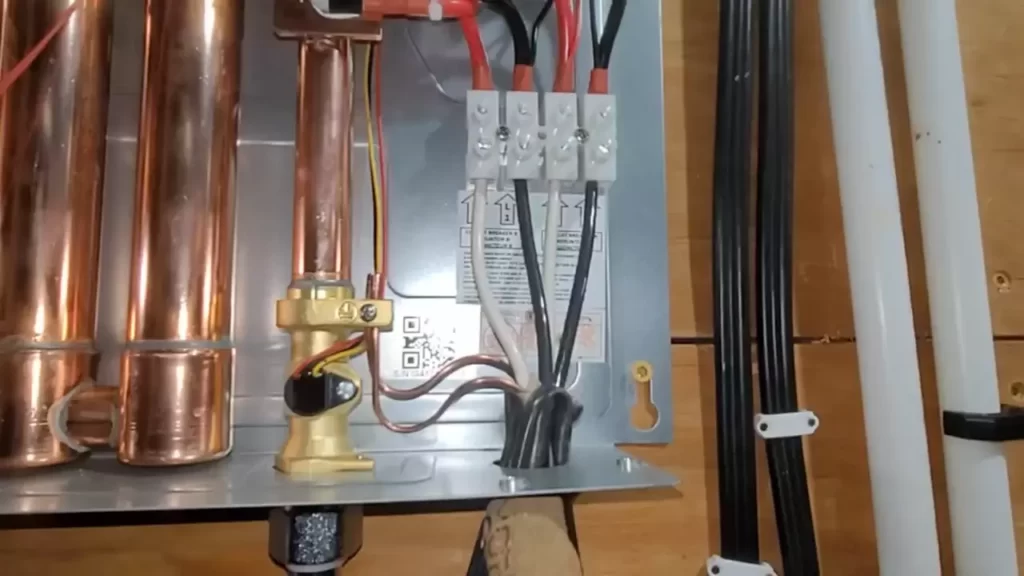
Shutting Off Water And Electricity
Turning off the main water supply
Before you begin the installation of your electric tankless hot water heater, it’s crucial to shut off the main water supply to your home. This ensures that no water will be flowing through the pipes while you are working on the installation, preventing any potential accidents or water damage.
To turn off the main water supply, locate the water meter usually found near the street. You will see a shut-off valve next to the meter. Using a wrench, turn the valve clockwise until it is completely closed. This will stop the flow of water into your home.
Disconnecting power to the existing water heater
Now that the water supply is shut off, it’s time to disconnect the power to your existing water heater. Safety is paramount, so make sure you turn off the electrical supply to the heater before proceeding with any work.
Start by locating the circuit breaker panel in your home. This is usually found in the basement or utility room. Open the panel and look for the breaker that is labeled for your water heater. It may be labeled as “water heater” or “hot water heater.” Once you have identified the correct breaker, switch it to the “off” position.
After turning off the breaker, double-check that there is no power going to your water heater by using a voltage tester. This device will indicate whether or not there is still electrical current flowing to the water heater. If the tester indicates there is still power, go back to the breaker panel and make sure you have turned off the correct breaker.
With the power off, you can now safely disconnect the electrical connections to the existing water heater. Depending on the wiring setup, you may need to remove a panel or cover to access the wires. Carefully disconnect the wires using a screwdriver or pliers, being sure to note which wire goes where for reconnection later.
Now that you have successfully shut off the main water supply and disconnected the power to your existing water heater, you are ready to move on to the next steps of installing your electric tankless hot water heater. Make sure to follow the manufacturer’s instructions and guidelines for a safe and successful installation.
Mounting The Electric Tankless Hot Water Heater
Mounting Options and Guidelines
When it comes to installing an electric tankless hot water heater, one crucial step is mounting the unit properly. Mounting the heater securely and in the appropriate location ensures proper support and stability, which is essential for its safe and efficient operation.
Here are some important guidelines and options to consider when mounting your electric tankless hot water heater:
Mounting Options
There are various mounting options available for electric tankless hot water heaters, depending on your specific needs and the available space in your home. Here are a few common mounting options:
- Wall Mount: This is the most common and space-efficient option for mounting your electric tankless hot water heater. Utilizing sturdy brackets, the unit can be securely mounted on a wall. Make sure to follow the manufacturer’s instructions and use the appropriate hardware for wall mounting.
- Under Cabinet: If space is limited, you can consider installing your electric tankless hot water heater underneath a cabinet or sink. This option requires careful planning to ensure proper ventilation and easy access for maintenance and repairs.
- Freestanding: In some cases, a freestanding installation might be the best option. This involves placing the heater on a sturdy platform or stand that can support its weight. Make sure the platform is level and stable to prevent any accidents or damage.
Ensuring Proper Support and Stability
Regardless of the mounting option you choose, it is crucial to ensure proper support and stability for your electric tankless hot water heater. Here are a few key points to keep in mind:
- Weight: Electric tankless hot water heaters can be heavy, so it’s essential to ensure that the mounting surface can support the weight of the unit and any additional accessories.
- Hanging Height: Consider the appropriate height for hanging the heater, taking into account accessibility for maintenance and repairs, as well as any clearance needed for plumbing connections.
- Secure Mounting: Properly secure the unit using the recommended mounting hardware. This will prevent any unwanted movement or vibrations that could lead to damage or water leaks.
- Ventilation: Make sure the mounting location allows for adequate ventilation to prevent overheating. Avoid placing the heater in enclosed spaces or near flammable materials.
By following these mounting options and guidelines, you can ensure the successful installation of your electric tankless hot water heater. Remember to consult the manufacturer’s instructions for specific requirements and seek professional assistance if needed for a seamless and efficient mounting process.
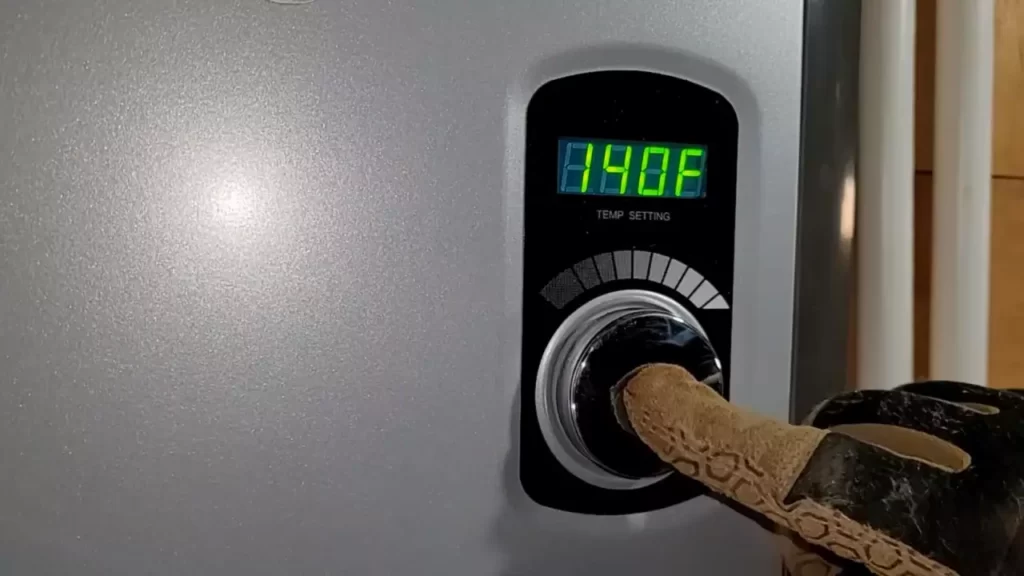
Making Necessary Plumbing Connections
Connecting Water Supply Lines
Once you have chosen the perfect spot for your electric tankless hot water heater and have prepared the necessary electrical connections, it’s time to make the crucial plumbing connections.
Step 1: Before connecting the water supply lines to your tankless hot water heater, make sure you shut off the main water supply to your home. This will prevent any accidental water leakages during the installation process.
Step 2: Next, locate the cold water supply line and the hot water outlet on your tankless water heater. Connect the cold water supply line to the designated cold water inlet and the hot water outlet to the hot water plumbing system in your home.
Step 3: It’s crucial to use the right fittings for connecting the water supply lines to your tankless hot water heater. Consult the manufacturer’s instructions for the appropriate size and type of fittings to use.
Step 4: Apply some plumber’s tape to the threads of the fittings to ensure a secure and watertight connection. This will help prevent any potential leaks in the future.
Step 5: Once the fittings are tightly secured, open the main water supply valve and allow the water to fully flow through the system. Check for any leaks or drips and make adjustments as necessary.
Installing Shut-off Valves and Pressure Relief Valves
When installing an electric tankless hot water heater, it’s important to include shut-off valves and pressure relief valves to ensure the safety and functionality of the system.
Step 1: Locate the inlet and outlet connections on your tankless hot water heater. These are typically labeled and easy to identify.
Step 2: Install shut-off valves on both the hot water and cold water lines leading to the tankless heater. These valves will allow you to isolate the heater from the rest of your plumbing system for maintenance or repairs. Make sure the valves are securely tightened and ensure they are in the off position before proceeding with the installation.
Step 3: Next, install pressure relief valves on both the hot water and cold water lines. These valves will help regulate the pressure inside the tankless hot water heater, preventing any potential damage from excessive pressure buildup. Follow the manufacturer’s instructions for the correct installation and pressure setting.
Step 4: Once the shut-off valves and pressure relief valves are installed, double-check that they are tightly secured and in the closed position. This will ensure the proper functionality and safety of your electric tankless hot water heater system.
Electrical Wiring And Connections
Installing an electric tankless hot water heater requires proper electrical wiring and connections to ensure the safe and efficient operation of the unit. In this section, we will discuss the guidelines for electrical wiring and how to connect the heater to the electrical panel.
Guidelines for Electrical Wiring
Before starting the installation process, it is essential to follow these guidelines for electrical wiring:
1. Safety First: Prioritize safety by turning off the power supply to the area where you will be working. This will prevent any accidents or electric shock.
2. Consult the Manufacturer’s Manual: Always refer to the manufacturer’s manual for specific instructions and guidelines related to the electrical requirements of your electric tankless hot water heater. Make sure to follow their recommendations to avoid any issues.
3. Voltage and Amperage: Check the voltage and amperage requirements of your electric tankless hot water heater. Ensure that your electrical panel can handle the load and that the wiring and circuit breakers are compatible.
4. Dedicated Circuit: A dedicated circuit is required to power your electric tankless hot water heater. This means that no other appliances or devices should be connected to the same circuit. Installing a dedicated circuit will prevent overloading and potential damage to your electrical system.
5. Proper Gauge Wiring: Use the appropriate gauge wiring for your electric tankless hot water heater. Thicker gauge wires are necessary to handle the higher amperage. Consult the manufacturer’s manual or an electrician to determine the correct wire size.
6. Grounding: Ensure that the electrical panel and wiring are properly grounded according to local electrical codes. Grounding reduces the risk of electrical shock and protects your tankless hot water heater.
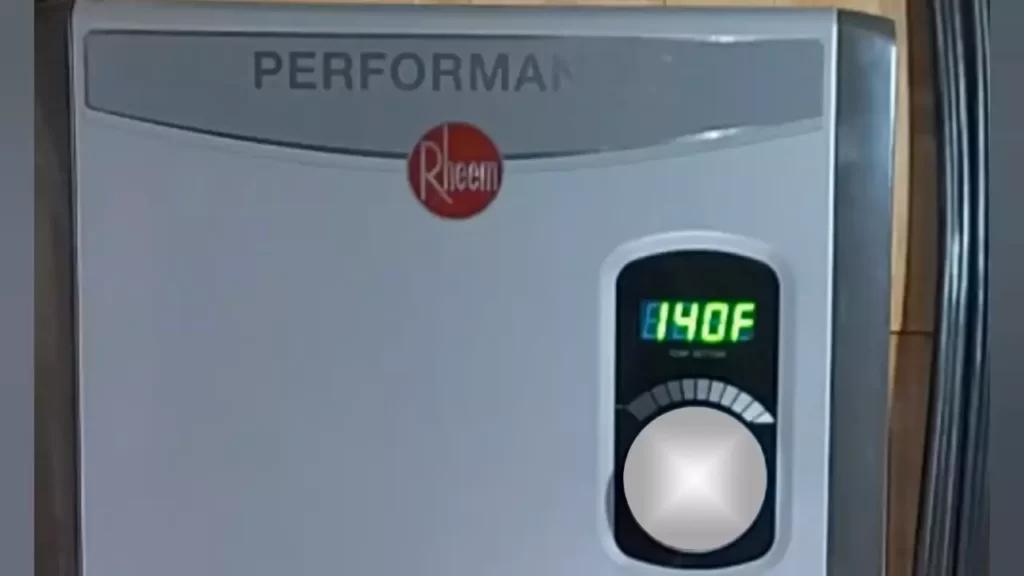
Connecting the Heater to the Electrical Panel
Once you have followed the guidelines for electrical wiring, you can proceed to connect your electric tankless hot water heater to the electrical panel. Here’s how you can do it:
1. Identify the electrical panel: Locate your main electrical panel and turn off the power supply to the area where you will be working.
2. Run the wiring: Measure and cut the appropriate length of wire from the electrical panel to the location where you will install the electric tankless hot water heater. Ensure that the wire is not damaged or frayed.
3. Strip the wire: Use a wire stripper to remove the insulation from the ends of the wire. This will expose the copper conductors, allowing for proper connections.
4. Install a circuit breaker: Install a circuit breaker in the electrical panel that matches the amperage requirements of your electric tankless hot water heater. Connect the hot wire to the breaker, the neutral wire to the neutral bus bar, and the ground wire to the grounding bus bar.
5. Make the connections: At the location of the electric tankless hot water heater, connect the wires to the appropriate terminals on the unit. Typically, there will be terminals for hot, neutral, and ground wires. Follow the manufacturer’s instructions for proper wiring connections.
6. Double-check the connections: Before turning the power back on, double-check all the connections to ensure they are secure and properly tightened. This will prevent any loose connections and potential hazards.
7. Restore power: Once you have verified all the connections, you can turn the power supply back on from the main electrical panel.
By following these guidelines for electrical wiring and properly connecting your electric tankless hot water heater to the electrical panel, you can ensure a safe and efficient installation. Always consult a professional electrician if you are unsure or uncomfortable performing any electrical work.
Installing Venting System (If Applicable)
Installing a venting system is an essential step when it comes to installing an electric tankless hot water heater. Venting ensures the safe and efficient release of gases produced during the heating process. In this section, we will provide an overview of ventilation requirements and discuss the different types of venting options available for your electric tankless hot water heater.
Overview of ventilation requirements
Before diving into the details of venting options, it’s important to understand the ventilation requirements for your electric tankless hot water heater. Adequate ventilation is crucial to prevent the buildup of harmful gases, such as carbon monoxide, inside your home. The specific ventilation requirements may vary depending on the brand and model of your heater, so be sure to refer to the manufacturer’s guidelines for accurate information.
Types of venting options available
Now let’s explore the different types of venting options you can consider for your electric tankless hot water heater. The choice of venting system largely depends on the layout and configuration of your home, as well as the specific requirements outlined by the heater manufacturer.
Here are some common venting options:
- Direct vent: This type of venting system utilizes a two-pipe configuration, where one pipe brings in fresh air for combustion, while the other pipe exhausts the combustion gases. Direct venting is ideal for homes without an existing chimney or flue, as it allows for flexibility in installation.
- Power vent: A power venting system relies on a fan or blower to exhaust the combustion gases. This type of venting is suitable when the installation location doesn’t have access to vertical venting options or when longer venting runs are required.
- Horizontal vent: If your electric tankless hot water heater is located on an exterior wall, a horizontal venting system can be a suitable option. This type of venting relies on a horizontally installed vent pipe to carry away the combustion gases.
- Vertical vent: In cases where the heater is located indoors or in a basement, a vertical venting system is often used. This system utilizes a vertically installed vent pipe to safely channel the combustion gases out of your home.
It’s crucial to consult with a qualified professional or refer to the manufacturer’s guidelines to determine the most appropriate venting system for your specific circumstances. By choosing the right venting option and ensuring proper installation, you can ensure the safe and efficient operation of your electric tankless hot water heater.
Testing And Adjusting The Heater
Once you have successfully installed your electric tankless hot water heater, the next step is to ensure that it is functioning optimally. This involves conducting pressure tests and leak checks as well as fine-tuning the temperature settings. By following these steps, you can make sure that your new heater is operating safely and efficiently, providing you with on-demand hot water whenever you need it.
Conducting Pressure Tests and Leak Checks
Before you start using your electric tankless hot water heater, it is crucial to conduct pressure tests and leak checks to ensure its reliability. Follow these steps to perform these tests:
- Turn off the power supply: Begin by turning off the power supply to the heater. This will prevent any accidental activation during the testing process.
- Inspect connections: Examine all connections, including pipes and fittings, to make sure they are secure and leak-free. Note any areas that require additional sealing.
- Pressure test: Attach a pressure gauge to the heater’s input and output pipes. Slowly open the main water supply valve and observe the pressure gauge for any fluctuations or abnormal readings. The pressure should remain steady within the acceptable range. If there are any significant drops in pressure, it may indicate a leak or a problem with the incoming water supply. In such cases, it is advisable to seek professional assistance.
- Leak check: Once the pressure test is complete, visually inspect all connections, valves, and pipes for any signs of leaks. Running a clean, dry cloth along the fittings can help detect even small leaks. Make sure to address any leaks promptly to avoid water damage and ensure efficient operation of the heater.
Fine-tuning the Temperature Settings
After confirming that your electric tankless hot water heater is watertight and free of leaks, the next step is to fine-tune the temperature settings according to your preference. Follow these steps to ensure the water temperature meets your needs:
- Locate the temperature control panel: Depending on the model of your heater, the temperature control panel may be located on the front of the unit or inside a control box.
- Adjust the temperature: Use the controls provided to increase or decrease the temperature as desired. Start by setting the temperature to a moderate level and test the water. Make further adjustments until you find the temperature that meets your specific requirements.
- Consider safety features: Some electric tankless hot water heaters come with safety features such as a child-lock function. If applicable, ensure that these features are properly set up for added peace of mind.
By following these steps, you can not only ensure that your electric tankless hot water heater is operating efficiently, but also customize the temperature to suit your preferences. Taking the time to test and adjust your new heater will ensure that you enjoy a reliable and comfortable supply of hot water throughout your home.
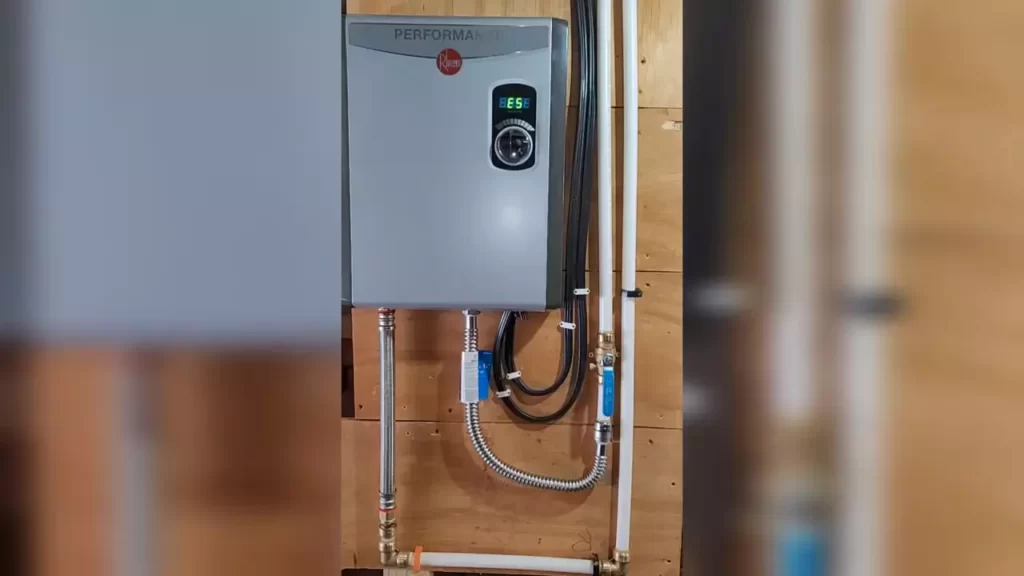
Identifying And Fixing Leaks
One common issue that can arise when installing an electric tankless hot water heater is leaks. Identifying and fixing these leaks is essential to ensure the proper functioning of your system and to prevent any potential damage. In this section, we will look at the possible causes of leaks and the steps you can take to repair and prevent them.
Possible Causes of Leaks
Before diving into how to fix leaks, it’s important to understand what can cause them in the first place. Leaks can occur due to a variety of reasons, such as:
- Loose connections: If the connections between the pipes and fittings are not properly tightened, they can lead to leaks.
- Damaged seals: Over time, seals can become worn or damaged, resulting in water leakage.
- High water pressure: Excessive water pressure can put strain on the pipes and joints, leading to leaks.
- Cracked pipes: If the pipes are cracked or damaged, water can escape and cause leaks.
Steps to Repair and Prevent Leaks
Now that we have identified the possible causes of leaks, let’s discuss the steps you can take to repair and prevent them:
- Inspect and tighten connections: Start by inspecting all the connections to ensure they are properly tightened. If you notice any loose connections, use a wrench to tighten them securely.
- Replace damaged seals: If you find any worn or damaged seals, they should be replaced. This can be done by turning off the water supply, removing the old seal, and placing a new one in its position.
- Install a pressure regulator: To prevent leaks caused by high water pressure, consider installing a pressure regulator. This device will help regulate the water pressure and protect your system from excessive stress.
- Check for cracked pipes: Inspect all the pipes for any visible cracks or damage. If you find any, it’s crucial to replace the affected pipes as soon as possible to prevent leaks.
- Perform regular maintenance: To prevent future leaks, it’s essential to perform regular maintenance on your electric tankless hot water heater. This can include flushing the system, inspecting all components, and addressing any issues promptly.
By following these steps and staying proactive in your maintenance efforts, you can effectively repair and prevent leaks in your electric tankless hot water heater. Remember, addressing leaks promptly will help prolong the lifespan of your system and ensure it operates efficiently for years to come.
Addressing Electrical Connectivity Problems
Troubleshooting electrical connection issues
When installing an electric tankless hot water heater, it is crucial to address any potential electrical connectivity problems that may arise. These issues can prevent your heater from functioning properly and can even pose safety hazards. In this section, we will discuss some common electrical connection issues that you may encounter during the installation process and provide troubleshooting tips to help you overcome them.
Ensuring proper grounding and electrical compatibility
Proper grounding and electrical compatibility are key factors for the efficient functioning of your electric tankless hot water heater. Without these, your heater may not work optimally, or worse, it could potentially cause damage to your electrical system. Here are some vital considerations to keep in mind:
- Check your electrical capacity: Before installing your electric tankless hot water heater, it is essential to ensure that your electrical system is capable of handling the required power load. Consult the manufacturer’s specifications and compare them to your electrical panel’s capacity. If you notice any discrepancies, consult an electrician to upgrade your electrical system if necessary.
- Verify proper voltage: Electric tankless hot water heaters usually require a specific voltage to function correctly. Check the manufacturer’s instructions to determine the required voltage for your heater. Next, measure the voltage at your installation location using a voltmeter. If the measured voltage deviates significantly from the required voltage, consider contacting an electrician for assistance.
- Ensure proper grounding: Grounding your electric tankless hot water heater is critical for your safety and the proper functioning of the unit. Consult local electrical codes and regulations to determine the specific grounding requirements for your area. A qualified electrician can assist you in establishing a safe and reliable grounding system for your heater.
By taking these steps to ensure proper grounding and electrical compatibility, you can minimize the risk of electrical problems and ensure the smooth operation of your electric tankless hot water heater.
Dealing With Insufficient Water Flow
If you’ve recently installed an electric tankless hot water heater and are experiencing low water flow, there are a few common reasons that may be causing this issue. In this article, we’ll explore these reasons and provide some solutions to help you improve the water flow rate of your tankless hot water heater.
Reasons for low water flow
There can be several reasons for low water flow in an electric tankless hot water heater:
- Insufficient water pressure: One of the main culprits behind low water flow is low water pressure. If the incoming water pressure is too low, it can significantly impact the performance of your tankless hot water heater.
- Clogged or restricted pipes: Another possible reason is the presence of clogs or restrictions in the pipes. Over time, mineral deposits, sediment, or even debris can accumulate in the pipes, blocking the water flow and reducing the flow rate.
- Undersized water heater: If the tankless hot water heater you installed is too small for your household’s hot water demands, it may not be able to provide an adequate flow rate. This can lead to water pressure issues and a decrease in flow.
Solutions to improve water flow rate
If you’re facing low water flow with your electric tankless hot water heater, there are several solutions you can try:
- Check water pressure: Start by checking the water pressure in your home. Use a pressure gauge to measure the incoming water pressure and ensure it meets the manufacturer’s recommended range. If it’s below the recommended level, you may need to consider installing a pressure booster pump.
- Flush the system: If you suspect clogs or restrictions in the pipes, perform a system flush to remove any accumulated deposits or debris. Consult your tankless hot water heater’s user manual or get professional assistance to carry out this process properly.
- Consider pipe upgrades: If you have old or corroded pipes, it’s worth considering upgrading them to improve water flow. Discuss with a plumber to determine if replacing or re-sizing the pipes will help enhance the flow rate.
- Upgrade to a larger unit: If your current electric tankless hot water heater is undersized for your needs, upgrading to a larger unit with a higher flow rate can provide a significant improvement. Consult with a professional to determine the proper size for your household.
Remember, if you’re uncertain or uncomfortable with tackling these solutions on your own, it’s always best to seek the help of a professional plumber or technician. They can assess your specific situation and provide expert guidance to enhance your water flow rate and ensure you have a steady supply of hot water throughout your home.
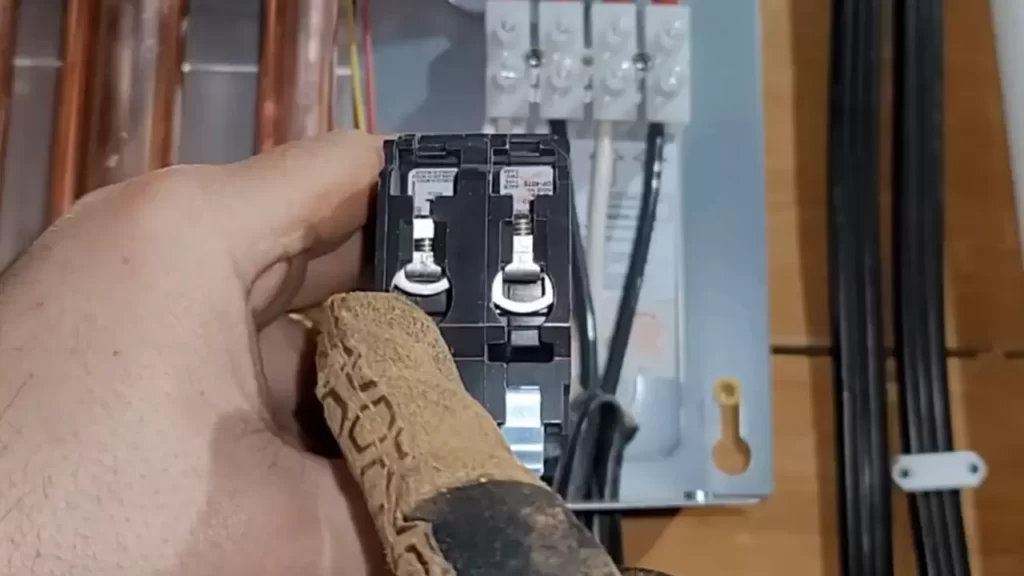
Regular Cleaning And Descaling
Importance of maintenance for optimal performance
Regular cleaning and descaling are crucial for ensuring the optimal performance of your electric tankless hot water heater. Over time, mineral deposits and sediment can build up inside the heating chamber, causing reduced efficiency and potentially damaging the unit. By staying proactive with maintenance, you can extend the lifespan of your tankless water heater and keep it running smoothly for years to come.
Recommended cleaning techniques
When it comes to cleaning your electric tankless hot water heater, there are a few tried-and-true techniques that can effectively remove mineral deposits and prevent scaling. Here are some recommended methods:
- Flushing the system: Regularly flushing the system can help remove accumulated sediment and mineral deposits. To do this, turn off the power to the water heater and turn off the water supply. Next, open a hot water faucet in your home to relieve pressure. Attach a hose to the bottom drain valve of the water heater and run it to a nearby drain or bucket. Open the drain valve and let the water flow until it runs clear.
- Descaling with vinegar: For stubborn mineral deposits, descaling with vinegar can be an effective solution. Start by turning off the power and water supply to the heater. Mix equal parts white vinegar and water and fill a bucket with the solution. Attach a hose to the water heater’s cold water inlet and place the other end in the vinegar solution. Open the drain valve and the cold water inlet valve, allowing the vinegar solution to circulate through the heater for about an hour. Once the time is up, close the drain valve and remove the hose before turning on the water supply to flush out any remaining vinegar.
- Using a water softener: If you live in an area with hard water, using a water softener can help prevent mineral buildup in your tankless water heater. Water softeners work by replacing calcium and magnesium ions with sodium ions, reducing the chances of scaling. Consult with a professional plumber or a water treatment specialist to determine the right type and size of water softener for your specific needs.
By following these recommended cleaning techniques, you can ensure that your electric tankless hot water heater stays in optimal condition, providing you with a continuous supply of hot water whenever you need it. Remember to consult your manufacturer’s guidelines and specific model instructions for any additional cleaning or maintenance recommendations.
Replacing Components And Parts
If you own an electric tankless hot water heater and are experiencing issues with its performance, it might be time to consider replacing components and parts. In this section, we will explore common parts that may need replacement and provide step-by-step instructions on how to replace faulty components, ensuring your hot water heater continues to operate efficiently.
Common parts that may need replacement
Over time, certain components of your electric tankless hot water heater may wear out or become faulty. It’s important to identify these parts and replace them promptly to avoid any disruption in your hot water supply. Here are some common parts that may need replacement:
- Heating elements
- Temperature sensors
- Flow sensors
- Pressure relief valves
- Electrical connections
Steps to replace faulty components
When replacing faulty components in your electric tankless hot water heater, it’s crucial to follow the right steps to ensure proper installation. Here is a step-by-step guide:
- Before you begin, make sure to turn off the power supply to the hot water heater. This will prevent any accidental electrocution.
- Next, identify the faulty component that needs replacement. Refer to your hot water heater’s user manual for guidance.
- Disconnect any electrical connections or wiring associated with the faulty component. This may require the use of tools such as pliers or screwdrivers.
- Remove the old component carefully. Pay attention to any screws or bolts that are holding it in place.
- Take the new component and position it correctly in the hot water heater. Make sure it aligns with the existing connections and mounting points.
- Tighten any screws or bolts to secure the new component in place.
- Reconnect the electrical wiring to the new component, ensuring a secure and proper connection.
- Double-check all the connections and ensure everything is properly tightened.
- Finally, restore the power supply to the hot water heater and test its functionality. If the new component is installed correctly, you should notice improved performance.
By following these steps, you can easily replace faulty components in your electric tankless hot water heater, saving you the costs and hassle of calling a professional technician.
Extending The Lifespan Of The Heater
Installing an electric tankless hot water heater is a smart investment in your home. These energy-efficient systems can provide endless hot water while saving you money on your utility bills. But like any appliance, proper maintenance and care can go a long way in ensuring the longevity of your tankless water heater. In this post, we will discuss some tips and preventive measures to extend the lifespan of your heater.
Tips for Prolonging the Heater’s Lifespan
- Proper Ventilation: Ensure that your electric tankless hot water heater has adequate ventilation to prevent any issues with heat buildup. Proper ventilation will help dissipate heat and keep the internal components of the heater operating at optimum temperatures.
- Water Quality: High mineral content in the water can lead to scaling and mineral buildup inside the heater. Regularly checking the water quality and installing a water softener can help reduce these deposits, ensuring the efficient operation of your heater.
- Regular Flushing: Flushing your heater at least once a year can help remove any sediment or mineral buildup that may have accumulated over time. Follow the manufacturer’s instructions for proper flushing procedures to keep your heater running smoothly.
Preventive Maintenance Measures
Table 1: Recommended Maintenance Schedule
| Maintenance Task | Frequency |
|---|---|
| Check and clean the air intake vents | Monthly |
| Inspect and clean the heat exchanger | Annually |
| Flush the heater to remove sediment | Annually |
| Inspect and tighten electrical connections | Biannually |
| Check and replace the sacrificial anode rod | Every 2-3 years |
Regular preventive maintenance is key to keeping your electric tankless hot water heater in good condition. Here are some measures you can take:
- Check and clean the air intake vents on a monthly basis to ensure proper airflow.
- Annually inspect and clean the heat exchanger to remove any debris or buildup that could impede the heater’s efficiency.
- Flush the heater at least once a year to remove sediment and mineral deposits.
- Biannually inspect and tighten electrical connections to prevent any loose or faulty connections.
- Every 2-3 years, check and replace the sacrificial anode rod, which helps protect the heater from corrosion.
By following these tips and preventive maintenance measures, you can significantly extend the lifespan of your electric tankless hot water heater. Regular upkeep will not only ensure efficient performance but also save you money in the long run, as you won’t need to replace your heater prematurely.
Frequently Asked Questions On How To Install An Electric Tankless Hot Water Heater
Can I Install An Electric Tankless Water Heater Myself?
Yes, you can install an electric tankless water heater yourself. It is a relatively straightforward process that can be done with basic tools. However, it is important to follow the manufacturer’s instructions and adhere to local building codes to ensure proper installation and safety.
What Is Required To Install An Electric Tankless Water Heater?
To install an electric tankless water heater, you need a power supply, such as an electrical outlet or dedicated circuit. You also need access to cold water supply and plumbing connections. Additionally, you may need to consider the unit’s size and placement requirements, as well as any necessary permits or professional assistance.
Do Electric Tankless Water Heaters Use 110 Or 220?
Electric tankless water heaters can use either 110 or 220 volts.
Does Electric Tankless Water Heaters Need To Be Vented?
No, electric tankless water heaters do not need to be vented. They do not produce combustion gases, so there is no need for a venting system like there is with gas-powered tankless water heaters.
Conclusion
Installing an electric tankless hot water heater is a practical and energy-efficient solution for a continuous supply of hot water in your home. By following the step-by-step guide provided in this blog post, you can ensure a smooth installation process.
Remember to consult a professional if you encounter any difficulties. With the convenience and cost savings offered by this type of hot water heater, you can enjoy long showers and peace of mind. Start enjoying an endless supply of hot water today!
